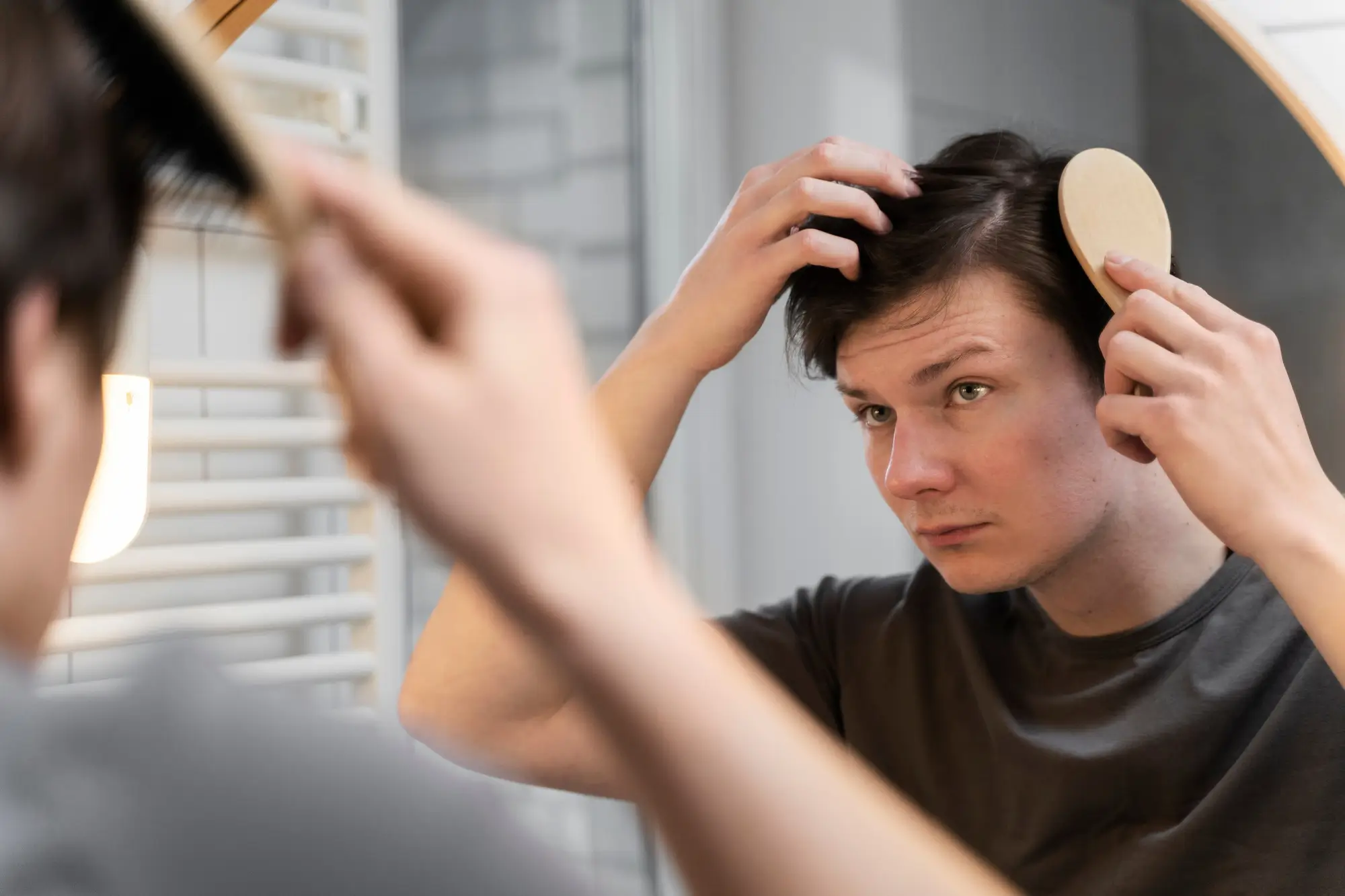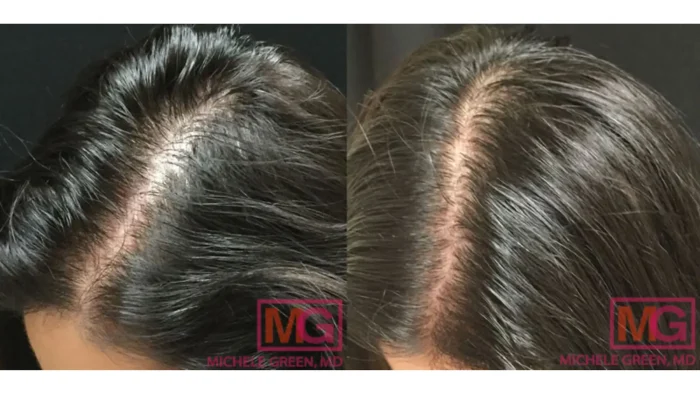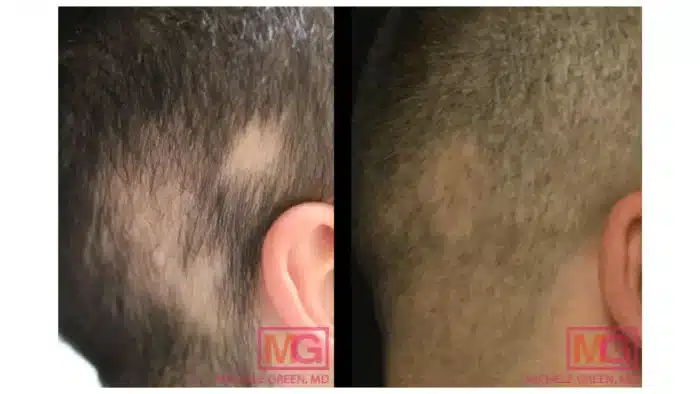
Plasmolifting for Hair – A Revolutionary Treatment for Hair Regrowth
Plasmolifting
2025-02-04
Discover Plasmolifting for hair, a revolutionary treatment for hair regrowth. This PRP-based therapy stimulates hair follicles, improves hair density, and offers a non-surgical solution for hair loss.
Joanna Carr
Hair loss affects over 50 million men and 30 million women in the U.S., with genetics, hormonal imbalances, and inflammation being the primary causes. Research indicates that poor blood circulation and reduced nutrient delivery to hair follicles accelerate thinning and shedding, highlighting the need for treatments that target these underlying issues.
Plasmolifting, a cutting-edge regenerative therapy, has gained attention as a promising solution for hair loss. This innovative treatment harnesses the power of platelet-rich plasma (PRP) derived from the patient’s own blood to stimulate cellular repair and follicle regeneration. Plasmolifting promotes natural hair regrowth without synthetic chemicals or invasive procedures by delivering essential growth factors directly to the scalp.
In this article, we will explore how Plasmolifting for hair works, its benefits for hair restoration, and the scientific principles behind its effectiveness in combating hair loss.
Key Takeaways
- Plasmolifting is an advanced treatment that uses platelet-rich plasma (PRP) to stimulate hair regrowth by reactivating dormant follicles.
- PRP growth factors enhance blood circulation and nutrient delivery to the scalp, strengthening hair, extending growth cycles, and encouraging new strand development.
- This treatment is most effective for individuals in the early stages of hair loss, including those with androgenetic alopecia, stress-related shedding, or those seeking a natural alternative to hair restoration.
- The procedure involves drawing a small amount of blood, isolating PRP, and injecting it into targeted areas of the scalp. Patients typically start with 3-4 sessions, followed by maintenance treatments every 4-6 months.
- Visible improvements in hair texture and thickness can be seen within 3-6 months, with full regrowth potential typically achieved between 6-12 months.
About: Doctor Medica is your trusted supplier of top-quality dermal fillers, viscosupplements, and more for your medical practice. We offer genuine products from leading brands at the lowest prices. Contact Doctor Medica today to order Plasmolifting online.
Mechanism of Action in Hair Regrowth
Plasmolifting utilizes the regenerative power of platelet-rich plasma (PRP) to stimulate dormant hair follicles and encourage natural hair regrowth. The growth factors in PRP improve blood circulation, enhancing oxygen and nutrient delivery to the scalp. This process strengthens existing hair, extends the growth cycle, and promotes the development of new strands for thicker, healthier hair.
During the procedure, a small amount of the patient’s blood is drawn and processed in a centrifuge to isolate PRP. The concentrated plasma is then injected into thinning areas of the scalp, where its growth factors stimulate follicles, enhance circulation, and trigger natural regeneration. Over time, this results in thicker, stronger hair.
Ideal Candidates for Hair Regrowth Treatment
Plasmolifting is most effective for individuals in the early stages of hair loss. Ideal candidates include:
- Those experiencing androgenetic alopecia (male or female pattern baldness).
- Individuals with stress-related hair loss or temporary shedding.
- Patients seeking a natural, drug-free alternative to traditional hair restoration treatments.
Treatment Process and Expected Results
After undergoing Plasmolifting for hair loss, patients may experience mild redness or sensitivity at the injection sites, which typically subsides within a day.
The treatment follows a structured plan for optimal results:
- Initial Phase: 3–4 sessions, spaced 4–6 weeks apart.
- Maintenance: One session every 4–6 months to sustain hair growth.
Visible improvements, such as reduced shedding and increased hair thickness, usually become noticeable within 3–6 months, with full results developing over time.
Before-and-After Results
Patients often notice early improvements in hair texture and volume, with full regrowth potential typically achieved within six to twelve months. Additionally, some individuals explore Plasmolifting for gums, which enhances healing in dental treatments.

Image Courtesy of Michele Green, MD
Before the treatment, hair appeared thin and weak and lacked volume, with visible scalp areas due to excessive shedding. Strands may be brittle, prone to breakage, and feel dry or lifeless. In some cases, early signs of bald patches or a receding hairline may be noticeable. Poor scalp circulation may contribute to slow hair growth and thinning.

Image Courtesy of Michele Green, MD
After Plasmolifting, hair looks noticeably thicker, stronger, and more voluminous. Shedding is significantly reduced, and new hair growth is visible in previously thinning areas. Strands appear healthier, shinier, and more resilient, with improved texture and elasticity. The scalp benefits from enhanced blood circulation, stimulating continuous hair regrowth and improving overall hair quality.
Conclusion
Plasmolifting is revolutionizing hair restoration by providing a natural and effective solution for hair regrowth. PRP therapy revitalizes hair follicles, strengthens existing strands, and enhances overall scalp health.
This treatment is particularly beneficial for individuals in the early stages of hair loss and those seeking a minimally invasive alternative to medications or hair transplants. With regular sessions and proper maintenance, Plasmolifting can significantly improve hair density over time.
For those looking to restore their confidence and achieve healthier, fuller hair, consulting a specialist in Plasmolifting can be the first step toward lasting hair rejuvenation.
FAQs
1. How long does it take to see results from Plasmolifting for hair?
Most patients notice initial improvements within three months. Full results, including increased hair thickness and regrowth, become visible between six and twelve months after treatment.
2. Is Plasmolifting for hair painful?
The procedure is minimally invasive and well-tolerated. Patients may experience mild discomfort during the injections, but numbing creams can reduce sensitivity.
3. How many Plasmolifting sessions are needed?
A standard treatment plan includes three to four initial sessions spaced four to six weeks apart. Maintenance treatments every four to six months help sustain results.
4. Can Plasmolifting be combined with other hair loss treatments?
Yes, it can be combined with topical minoxidil, low-level laser therapy, or microneedling to enhance results and promote faster hair regrowth.
References
Peyravian N, Deo S, Daunert S, Jimenez JJ. The Inflammatory Aspect of Male and Female Pattern Hair Loss. Journal of Inflammation Research. 2020;Volume 13:879-881. doi:10.2147/jir.s275785
Hetz SP, Martin J, Pototschnig H. Patient satisfaction and clinical effects of Platelet-Rich plasma on pattern hair loss in male and female patients. Cureus. Published online September 5, 2022. doi:10.7759/cureus.28801
Related Articles
Joanna Carr
Intraline PDO Threads – Non-Surgical Lifting and Contouring Solutions
Explore the benefits of Intraline PDO Threads for non-surgical lifting and contouring. Learn about the procedure, results, and why it’s a popular choi...
Joanna Carr
Radiesse For The Hands – Volumize and Rejuvenate
Radiesse is a dermal filler that can effectively rejuvenate aging hands by restoring volume and stimulating collagen production.
Joanna Carr
Controversy Surrounds New Scrotox Trend
Interested in learning more about Controversy Surrounding New Scrotox Trend? Browse Doctor Medica's comprehensive archive of blog posts.


